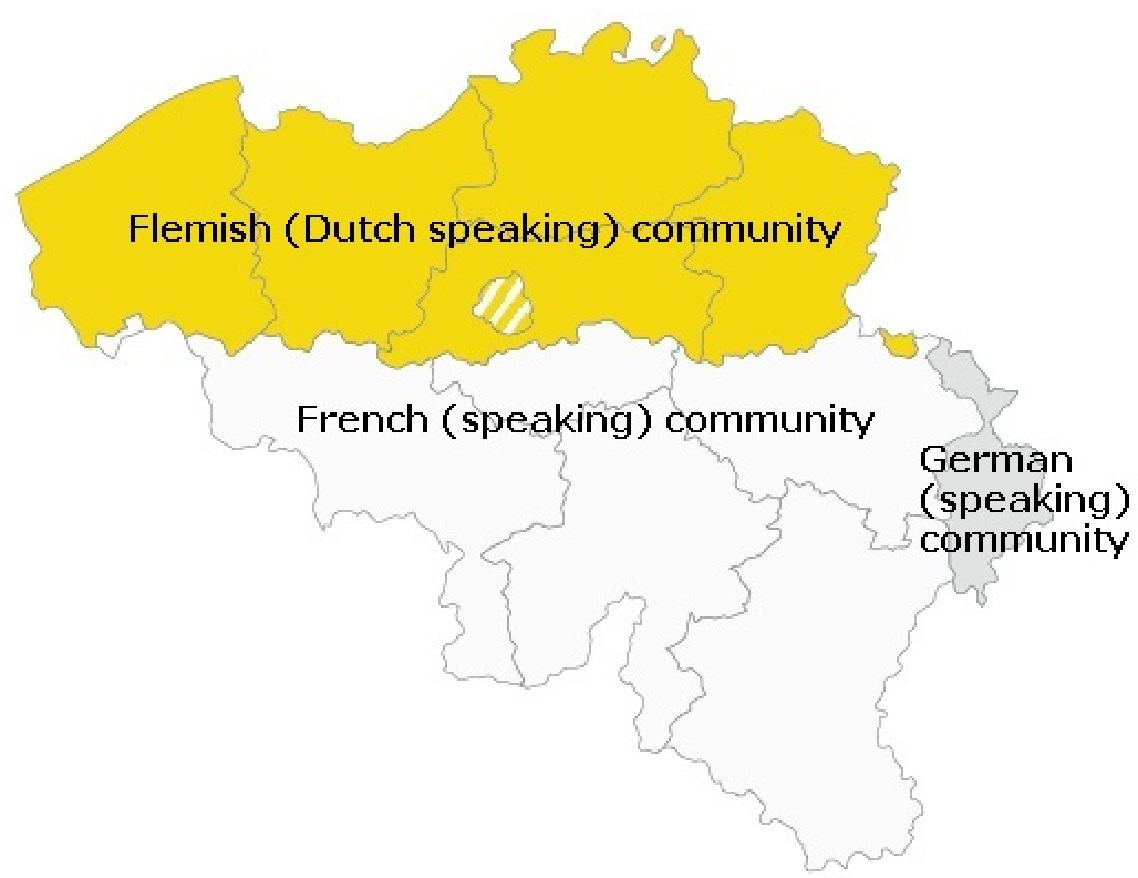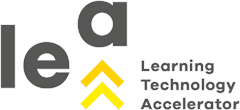Education Procurement in Belgium
Numbers
More information| Number of schools K-12 | Number of teachers K-12 | Number of students K-12 | Number of computers per student K-12 |
| 3.689 | 204.312 | 1.660.210 | 0,112 |
Sources / note: |
|||
| Numbers only for Flanders, 2018-19. | Numbers for 2017, see OECD | Numbers for 2017. See report, p.18 | Value only for Wallonie-Bru. (2017, see report, p. 13) |
Legislation of Education
More informationEducation in Belgium is regulated by the first Constitution of 1831, by the constitutional reform establishing cultural and linguistic communities (completed in 1993), and by several school laws. Article 17 of the Constitution of 1831 set "freedom of education," prohibiting efforts to hinder said freedom, and that the state would legislate publicly funded education. Article 17 has been consistently interpreted as meaning that the state must fund education but could not hold a monopoly in it, and that free institutions—in particular the Catholic Church—may provide public education parallel to the state. Accordingly, Belgium has several education systems, and the understandably numerous disputes between these systems have been settled primarily by means of supplemental legislation.
The educational system is different in the flemish community, french community and german-speaking community.

Communities in Belgium
Source: www.flemishparliament.eu/about-the-flemish-parliament/structurebelgium
Organisations
More information| Organization responsible for education | Role of the organization | Website |
| Federal State |
|
www.federal-government. be/en
|
| School boards |
|
|
| Flemish Community | ||
| Department for Education and Training | Policy coordination | https://onderwijs. vlaanderen.be |
| Agency for Educational Services (AgODI) | Implementation of education policy in elementary, secondary, part-time autistic education, student guidance centres | www.agodi.be |
| Agency for Higher Education, Audit Education, Qualifications and Study Allowance (AHOVOKS) | Grant funding for universities, university colleges and centres for adult education.
Responsible for teachers’ salaries and provide pupil and student grants.
Collection of data on student enrolment, credits and diplomas from all universities and university colleges in a central information system (DHO). |
https://onderwijs. vlaanderen.be |
| Agency for Educational Infrastructure (AGIOn) |
|
www.agion.be |
| French Community | ||
| General Administration of Education (AGE) |
|
www.enseignement.be/ index.php?page=2571 0&id=470 |
| Walloon region authorities |
|
www.belgium.be/en/about_ belgium/government/ regions/walloon_region |
| German-speaking Community | ||
| Ministry of Education |
|
www.dg.be/en/desktopd efault.aspx/tabid-2815/5363_read-34691 |
| Schools |
|
|
| Sources:
OECD: Education Policy Outlook – Belgium, 2017 European Commission / EACEA National Policies Platform / Eurydice / Belgium – Flemish Community Overview, European Commission / EACEA National Policies Platform / Eurydice / Belgium – French Community Overview European Commission / EACEA National Policies Platform / Eurydice / Belgium – German-Speaking Community Overview |
||
Funding of education
More information| Type of schools | Source of funds |
| Publicly funded schools | Direct authority of the Community |
| Publicly managed grant-aided schools | Cities or municipalities |
| Privately managed grant-aided schools (for example religious schools, schools with specific training methodologies) | |
|
The majority (95% in 2013) of expenditure on educational institutions are financed from public sources. Education is financed by the above mentioned three Communities, however, the German-speaking Community receives funding from the Province of Luxembourg as well. This funding is received particularly for special education needs.
The source of the procurement of educational technology objectives comes principally from national grants. |
|
|
Sources: OECD: Education Policy Outlook – Belgium, 2017 |
|
Public expenditure on education ISCED (2011) (million EUR)
More information| Year | Primary education | Lower secondary education | Upper secondary education | Total |
| 2012 | 6038,5 | 3491,2 | 7226,0 | 16755,7 |
| 2013 | 6083,3 | 3517,0 | 7458,3 | 17058,6 |
| 2014 | 6138,4 | 3587,9 | 7514,9 | 17241,3 |
| 2015 | 6327,3 | 3626,7 | 7596,1 | 17550,1 |
| 2016 | 6617,5 | 3731,2 | 7691,7 | 18040,3 |
|
Source: Eurostat (online data codes: educ_uoe_fine01) |
||||
Expenditure on educational institutions ISCED (2011) (Million EUR)
More information| Year | Expenditure | Primary education | Lower secondary education | Upper secondary education | Total |
| 2012 | Current expenditure | 5 795,2 | 3 480,5 | 6 986,9 | 16 262,6 |
| Capital expenditure | 290,1 | 76,9 | 157,8 | 524,8 | |
| Total | 6 085,3 | 3 557,4 | 7 144,7 | 16 787,4 | |
| Share of capital expenditure (%) | 4,8 | 2,2 | 2,2 | 3,1 | |
| 2013 | Current expenditure | 5 825,9 | 3 505,0 | 7 171,1 | 16 502,0 |
| Capital expenditure | 353,0 | 83,8 | 181,0 | 617,8 | |
| Total | 6 178,9 | 3 588,7 | 7 352,0 | 17 119,6 | |
| Share of capital expenditure (%) | 5,7 | 2,3 | 2,5 | 3,6 | |
| 2014 | Current expenditure | 6 016,6 | 3 570,1 | 7 219,5 | 16 806,2 |
| Capital expenditure | 259,8 | 90,0 | 187,2 | 537,0 | |
| Total | 6 276,4 | 3 660,1 | 7 406,8 | 17 343,3 | |
| Share of capital expenditure (%) | 4,1 | 2,5 | 2,4 | 3,1 | |
| 2015
|
Current expenditure | 6 154,3 | 3 600,0 | 7 249,2 | 17 003,5 |
| Capital expenditure | 256,4 | 86,5 | 178,9 | 521,8 | |
| Total | 6 410,7 | 3 686,5 | 7 428,1 | 17 525,3 | |
| Share of capital expenditure (%) | 4,0 | 2,3 | 2,4 | 3,0 | |
| 2016 | Current expenditure | 6 441,3 | 3 689,7 | 7 298,6 | 17 429,6 |
| Capital expenditure | 337,4 | 124,1 | 254,3 | 715,8 | |
| Total | 6 778,7 | 3 813,8 | 7 552,8 | 18 145,3 | |
| Share of capital expenditure (%) | 5,0 | 3,3 | 3,4 | 3,9 | |
|
Source: Eurostat (online data code: educ_uoe_fini01) |
|||||
Investment plan for education / ICT in education
More information| Year | Amount in (€) | Main pillars of investments | Share of pillars (%) |
| 2020 | 8,9 million | Tablets; Laptops | Ex.: Tablets (32%); Laptops (28%) |
| Source: Values for Wallonia: École Numérique 2020 (see article) |
|||
Procurement Procedure
More informationThe public procurement system is also connected to the three regions.
At federal level:
- Federal Public Service Chancellery of the Prime Minister: prepares, coordinates and monitors legislation regarding public procurement processes and the development of e-procurement as well as the adjusting of the national law to EU directives.
- Central Procurement Body for the Federal Services: each of its 11 units is specialized in one of the following areas: insurance, fuel, hygiene, IT, furniture, office supplies, telecommunication, drinks and snacks, cars and light commercial vehicles. It manages contracts on behalf of the federal state.
- Purchasing Advice and Policy Unit: provides advice to purchasing departments of the federal institutions.
- Commission for Public Procurement: special advisory body including representatives from the federal authority, federal entities, public corporations, supervision bodies and representatives of businesses and trade unions.
- Belgian Court of Audit: exercises financial control regarding public federal institutions, communities, regional authorities and provincial authorities.
- Belgian Court of State and civil courts: Their task is the review of public procurement procedures. They can issue a penalty, suspension, cancellation of the contract. The decision of the Belgian Court of State is not subject to appeal.
Schools have no right to make decisions regarding procurement of educational technology tools. It is preferred to keep the decisions regarding learning content and budget centralized.
Source:
Public procurement – Study on administrative capacity in the EU Belgium Country Profile:
https://ec.europa.eu/regional_policy/sources/policy/how/improving-investment/public-procurement/study/country_profile/be.pdf
Other Important Information
More informationIn the French Community, significant investment has been made since 2011 in order to promote innovative teaching skills and to develop strong ICT skills among students. In the framework of these investments, Internet connections have been provided for Walloon schools with the cost of 35 million Euro, and multimedia equipment was purchased for schools in the Brussel Capital Region (with a total value of 6 million Euro).
Between 2014 and 2019 an initiative called “Fiber to the School” has been implemented for providing high-speed Internet connection to all secondary schools (with investing 10 million Euro).
LEA contact
More informationAndré Henriques
Startup Europe Regions Network
andre.henriques@startupregions.eu

